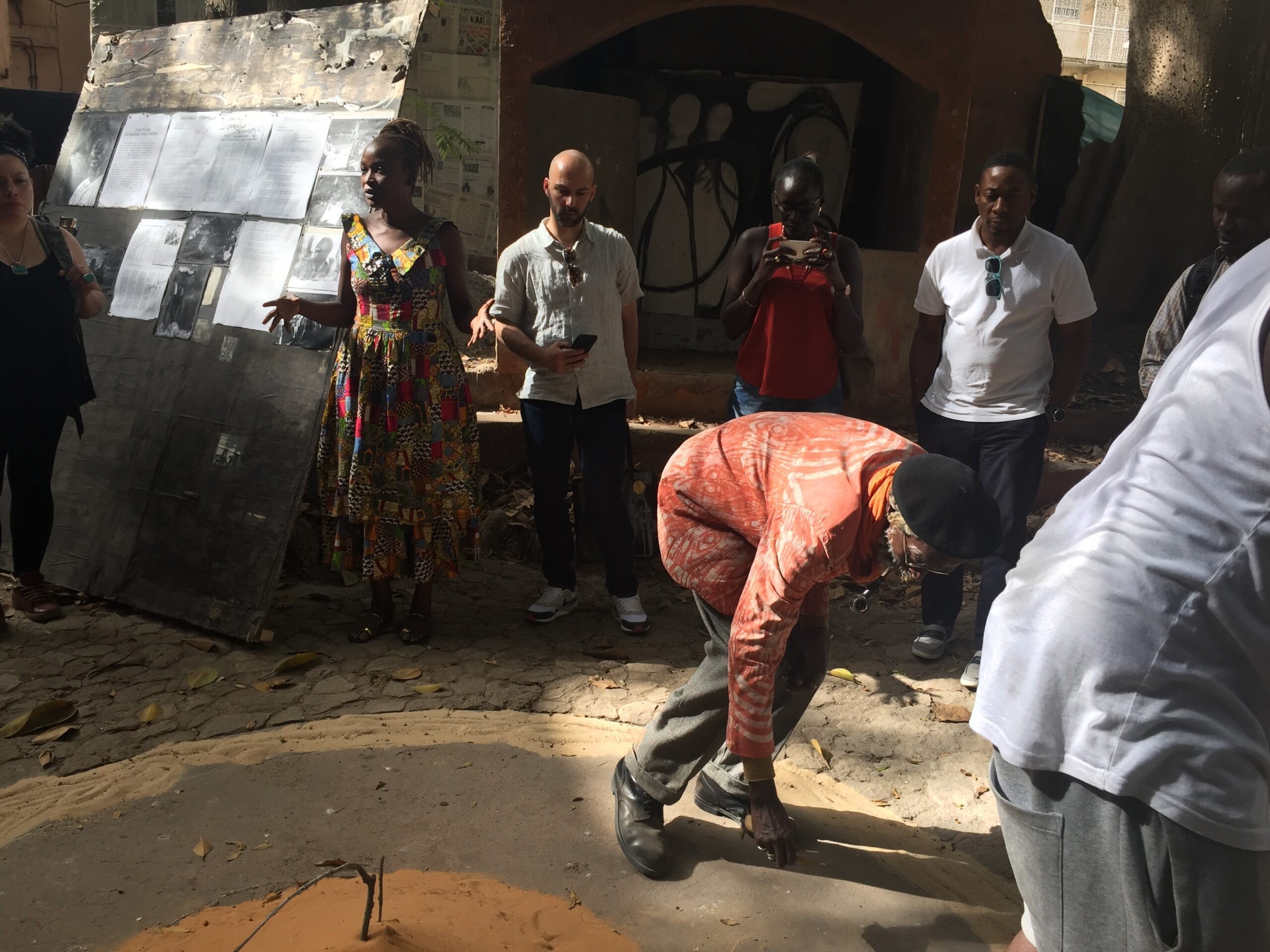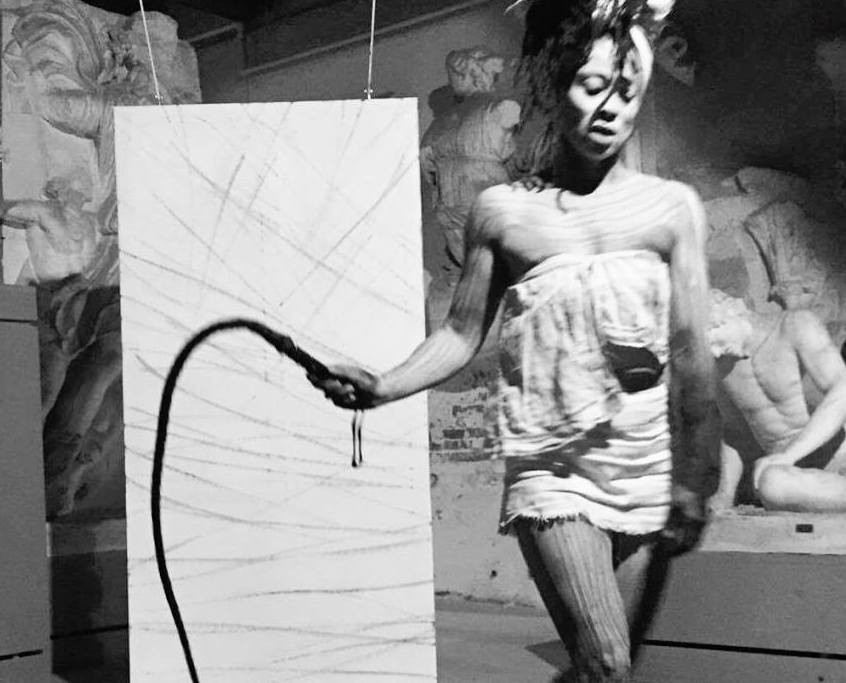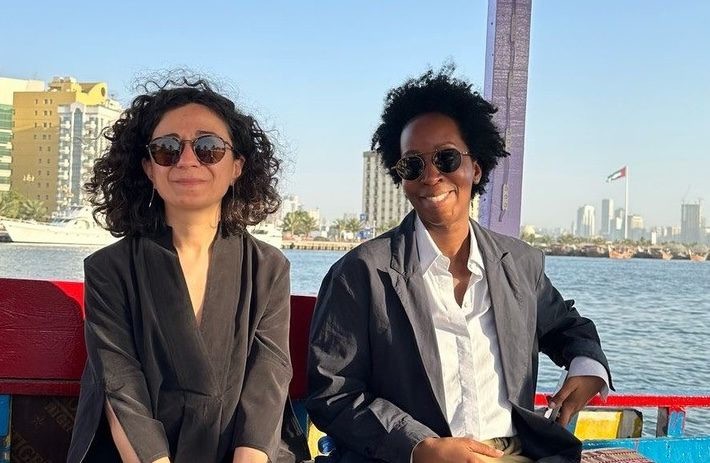Curating Contemporaneity

14 December 2016
Magazine C& Magazine
Words Taylor Renee
7 min read
Taylor Renee, a US-based writer and curator, traveled to Dakar, Senegal to attend the Curatorial Intensive for Independent Curators International (ICI). Here, she interrogates the role of the curator in the contemporary.
The workshop was held during the last week of the 2016 Dak’Art Biennale. I was one of twelve curators, writers and cultural producers who were chosen to participate in the seven-day intensive workshop. I had long admired the work of ICI alumni, and thought that the experience would be nothing short of fruitful and enlightening.
However, I had reservations. For a long time, I have known curatorial work to be something that is only carried out by a specific group of people who are equipped and pedigreed with a rigorous art historical background.
Yet, there’s been a trend reversal in the curatorial realm, where lines -- that have historically outlined who is qualified to curate -- have blurred. Now, artists are curators; curators become artists. In the contemporary, the term “curate” has also adopted various meanings. One can “curate” playlists, and closets. I too am guilty of“curating” coffee tables with my favorite ‘zines and books. I approached the Curatorial Intensive mindful of all of these nuances that are developing around the field. I was interested in exploring what this could mean for me as a writer, burgeoning curator and cultural producer who seeks to explore dimensions beyond the page in an effort to address today’s realities.
After landing in Dakar, I shared a cab from the airport with an attorney from Humans Rights Watch. She informed me of Hissène Habré, Chad’s former dictator, and his ongoing legal case. On the first day of Curatorial Intensive Dakar, Habré was sentenced to jail for life for a host of heinous rape and murder crimes. Learning about this story was my first impression as I approached the city of Dakar at night. I did not know what to expect but I was excited to be visiting the African continent for the first time, and admittedly, to my naivety, I was hoping to embark upon experiences that would enlighten or help me make sense of my murky identity as a Black American.
ICI’s Curatorial Intensive Dakar (referred to on social media as #CIDakar) was as ambitious as my expectations. Participants went through several seminars each day throughout the week. The seminars were led by seasoned curators from around the world, the continent and mainly from the city of Dakar. We also toured the city and participated in a few studio visits. Our host and site for the week was Raw Material Company, “a centre for art, knowledge and society,” founded by writer and curator Koyo Kouoh. Kouoh led the very first seminar of the week. In the three-hour lecture she made clear that she had created the innovative cultural center, Raw Material, out of a need for critical discourse in the city of Dakar. Kouoh encouraged participants to “dig where you stand,” in other words, to use our curatorial practice to address our immediate surroundings.
Midway through the program, we sat through a seminar led by 2016 Dak’Art artistic director and curator Simon Njami. For me, his was the most entertaining of the week. Njami began the seminar by stating that since we were in a French speaking country, he would only speak in French throughout his presentation. While the majority of the ICI Dakar participants spoke at least two to three languages, I along with the other few Americans only knew one language: English.
Throughout the week, I was constantly reminded of my Americanness, the politics of language, and how I was conditioned to expect others to adjust to my own language. I was in a country where I neither knew the colonial language (French) nor the native tongue (Wolof). As a result, I was experiencing a sense of vulnerability and exclusion. I developed an even deeper empathy for the many non-English speaking immigrants who come to America seeking refuge -- forced to posture their pathology to American culture -- only to be denied access and sometimes deportation or incarceration.
Njami began lecturing, sharing jokes only in French, then transitioning seamlessly between English and French, making clear that if we wanted to be in the field of curating, “it is important that you are multilingual.” Curators are translators, he said, if you don’t know multiple languages, how can you translate?
Njami later empathized with us and switched to English. He proclaimed an anti-institutional sentiment, stating that “the best curators are those who have not studied art history.” The recurring theme in his presentation was that curating does not begin with a dogmatic art historical background of institutional knowledge, but simply with an effort that should be informed by literature, philosophy, and lived experiences.
Njami also stressed the importance of knowing your audience and location as a curator. A curatorial concept must consider the space it will occupy as an exhibit and the audiences it will engage. There was a call to recenter people and place, rather than the art historical canon, as curators are traditionally encouraged to do.
We were able to see Njami’s curatorial philosophies in his director’s vision for the 12th edition of Dak’Art 2016, entitled “The City in the Blue Daylight” (La Cité dans le jour bleu). The main exhibition, “Re-enchantments,” was held in the Palais de Justice in Dakar, Senegal’s former supreme court. The building had been unused for some time and its decay was clearly visible. Amidst the artwork there were crumbling walls, a courtyard with ailing trees, and derelict surroundings. Although the Palais de Justice was no longer the pristine building it had once been, it had character and life.
Njami wasn’t clear on whether the derelict backdrop, in tandem with contemporary works from the continent, was an intentional pairing, but one could assume that it was. He reactivated a space that was more communal than a museum or a new cultural space could ever be. Dakar locals would visit the Biennale with a sense of rememory, maybe with memories of experiences they had in the judicial monument. Instead of creating a Biennale in Dakar, here was a biennale of Dakar. One that re-purposed an existing place, making it difficult not to engage with Dakar’s existing ecosystem.
Curator Nancy Adajania was one of the last speakers in the program. Adajania’s seminar, was one of the most impactful and thought-provoking presentations of the week. She talked passionately about the need to break away from identitarian constructs which ultimately are at risk of becoming dogmatic. She championed the notion of intersectionality in curatorial practice whereby the histories that are culled together in a curatorial thread should be dialogical and in most cases contradictory -- presenting multiple truths rather than one fixed ideology.
I left Dakar affirmed with the idea that curation in the contemporary should be democratized. To reference Francesco Bonami's comments, curators are not “irrelevant” but rather it seems as though the role of the curator means something totally different nowadays. The relevance of a contemporary curator relies on their willingness to center intersections of community, politics, and place.
.
Taylor Renee is a Detroit based writer and editor of the online journalARTS.BLACK. She is a recent graduate of Harvard University’s Museum Studies Masters program and she received her BA in Art History from Howard University.
Read more from




